|
Added 2008/01/28. Kinshiro mortise gauge. Click on thumbnails to see more pictures.
|
|
Added 2008/01/28. Kamaji woodworking knives by Yamamoto. Click on thumbnails to see more pictures.
|
|
Added 2007/01/14. Brass sumisashi. It makes an extremely fine line. It can be sharpened on a finish waterstone. |
|
|
|
Added 2006/08/08. "Daiku Dojo" woodworking knife by Yoshihiro Yamamoto (Katsusaburo maker) - 9.5" x 1" x 3/8". Blade is 2.5" long. This knife (right handed version) belongs to Bob. |
|
|
|
|
|
Scabbard (made from douglas fir) for carrying both left and right handed knives. |
|
Added 2006/05/13. Yet another hammer forged by Yataiki. This one belongs to Rene. |
|
|
|
|
|
|
|
Added 2006/04/01. Jay's Katsuburo Kiriba (made by Tesshinsai Houraku). Jay purchased it from Mrs. Mori (last checked, it's sold out). Like other Japanese plane and chisel blades, the Kiriba is a lamination of soft steel on a hard steel cutting edge. It is a stock blade which is meant to be cut up into smaller pieces for use as small plane or scraper blades. To cut up a small piece, Jay suggests sawing through the soft steel using a hack saw, then put it in a metal vise then bend it until it breaks off. |
|
Kiriba (back view). |
|
Kiriba (side view). Note the layer of hard steel. |
| 2006/01 |
|---|
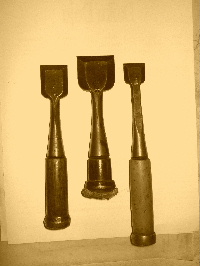 |
Jay's bench chisels. |
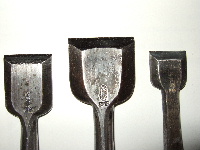 |
Jay's bench chisels (closeup view). |
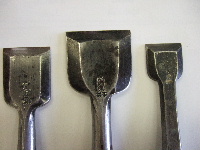 |
|
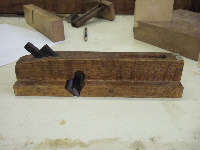 |
Jay's massive rabbet plane. |
 |
Jay's massive rabbet plane (bottom view) |
 |
Jay's hand plane collection. |
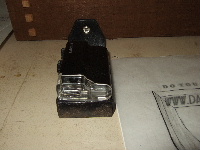 |
Jay's 60-100x illuminated microscope - $10 at RadioShack. It is useful for checking the cutting edge on your blades. |
 |
Jim's chisel hammer - flat on one end and convex on the other end. This hammer came from an axle which was cut, then heat treated by Yataiki (Endo Tomoya) during the Team Yataiki workshop at the Arques Boat School in 2003. According to Jim, they drilled three holes and hand filed them into the rectangular shape in which the handle is fitted. |
 |
Jim's chisel hammer. The convex head was polished with a belt sander, then covered with miso paste prior to final tempering by Yataiki. The head is extremely hard. |
 |
Jim made the handle for his Yataiki hammer. |
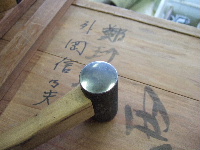 |
Jim's chisel hammer. The two parallel scratch lines on the hammer head were the result of the Rockwell hardness test. The head has virtually no scratches otherwise. |

